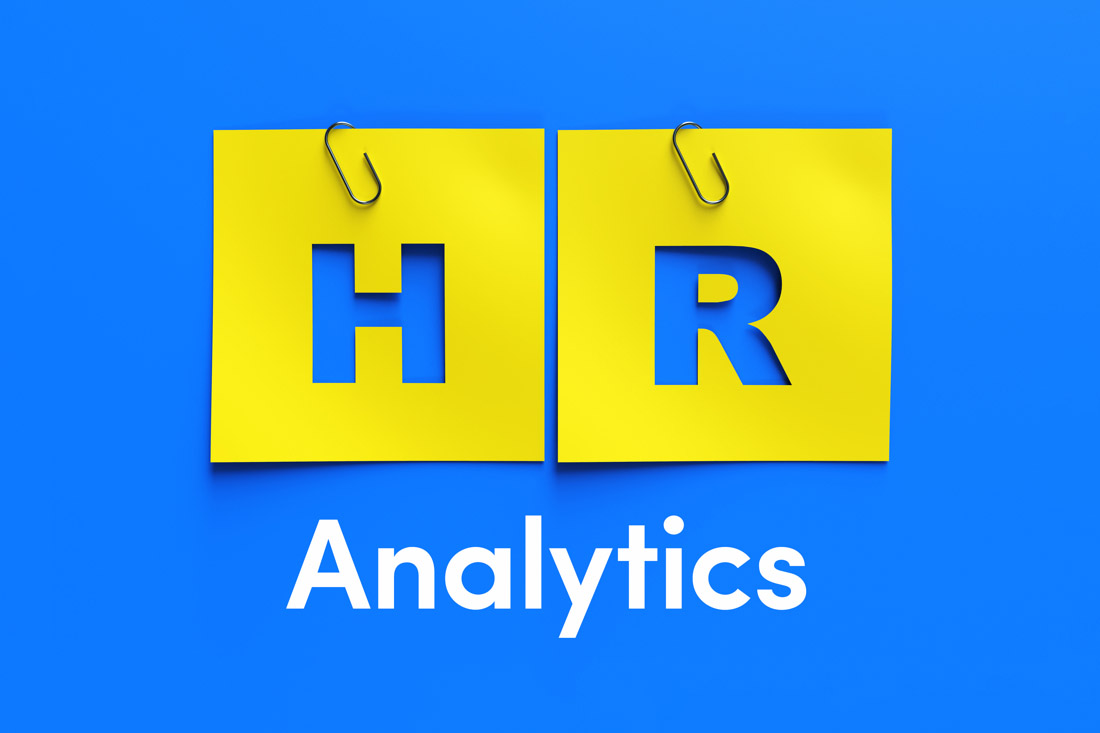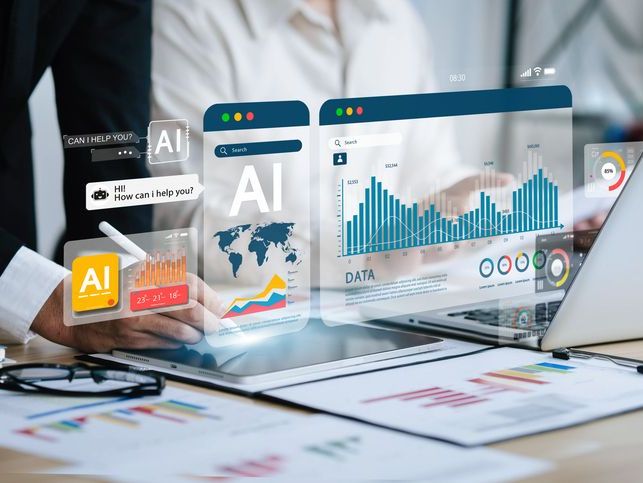Are you thinking of using human resources (HR) analytics? This powerful information changes the game for workforce insights. But first, you need to understand how it works.
To help, let’s explore the four types of HR analytics — descriptive, predictive, prescriptive and diagnostic — and how to use each one.
What is HR analytics?
HR analytics collects, measures and reports on HR data to uncover patterns. Often referred to as people analytics and workforce analytics, it looks at employee engagement, turnover, retention and other HR metrics to reveal opportunities and areas for improvement. Organizations use it to turn vast amounts of employee data into meaningful insights and replace guesswork with concrete data analysis.
Although analytics for human resources may seem complex, workforce analytics software automates most of the process. These tools turn thousands of data points into easy-to-understand executive dashboards on everything from productivity trends to technology usage.
The importance of analytics for human resources
There’s a lot more to HR analytics than just numbers. Done right, it has the power to turn struggling teams into human resources heroes. Successful HR professionals use it to improve talent acquisition, speed up onboarding, increase engagement, lower voluntary turnover and boost productivity.
For example, when HR analytics revealed people who work from home are more productive, one apparel manufacturer reversed its return-to-office policy and expanded its work-from-home program. At a third-party logistics company, leaders lean on HR analytics to understand skills gaps and see where people need more training. Some businesses use it to improve customer service. Others enhance employee well-being and create more effective workforce planning strategies.
In each application, the outcome is the same: HR analytics accurately answers tough questions and reveals hidden opportunities, empowering you to create a more agile, competitive business environment.
Benefits of HR analytics
Companies that use HR analytics to guide decisions experience many benefits, such as:
- More productivity: HR analytics tells you where and when your employees are most productive, making it easier to adopt flexible work arrangements.
- Higher performance: Using objective data to understand what motivates employees lets you create a positive work environment for higher performance.
- Fewer skills gaps: HR analytics dashboards help you identify skill gaps so you can better support and train employees.
- Better hiring processes: When you have an accurate picture of current workforce capacity and future talent needs, it’s easier to hire the right people for the right roles.
- Increased retention: HR analytics reveals the factors contributing to employee turnover — including those not reported in exit interviews — so you can take proactive steps to reduce attrition.
4 Types of HR analytics
There are four different types of HR analytics and each serves a specific purpose. To make data-driven decisions, it’s important to understand them all.
1. Descriptive HR analytics
Descriptive analytics uses historical data to reveal past trends. It focuses on employee metrics such as workforce demographics, retention patterns and productivity levels. This information helps you gain a deeper understanding of what happened, and why.
This type of HR analytics is most useful when you need a clear picture of the current state of your workforce. You’ll see how your current HR policies are performing and understand where you need to make changes.
For example, descriptive analytics tells you:
- What’s causing voluntary turnover: Descriptive analytics shows you when employees are overworked and makes it easy to spot signs of burnout. When these HR metrics precede a sudden spike in unanticipated resignations, you’ll know to dig deeper — particularly if they’re isolated to a specific team or department.
- What top-performing employees do differently: Descriptive HR analytics provides details on the day-to-day work habits of your top performers — what tools they use, where they work, how much time they spend in meetings and more. Many companies use these insights when developing training materials and onboarding guides.
2. Predictive analytics for human resources
While descriptive analytics focuses solely on historical data, predictive analytics forecasts the future of your workforce. It looks at patterns in employee activity to forecast what will happen moving forward.
Using statistical analysis and machine learning to predict outcomes, predictive HR analytics allows you to anticipate and plan for future events. Instead of focusing on what’s happening now, you’ll see what those trends might mean in the coming months or years. These insights empower HR teams to develop proactive strategies for maintaining an engaged workforce.
For example, many HR teams use predictive HR analytics to guide:
- Future workforce planning: Predictive analytics empowers you to forecast future talent needs, identify skills gaps and develop strategies to address them. You can compare your current workforce to the one your company will need a year from now to develop targeted strategies to bridge gaps.
- Future office space decisions: As work becomes more hybrid and remote, organizations struggle to calculate how much office space employees actually need. Predictive location insights help you anticipate how many teams will need physical workspaces and conference rooms, and where you can reduce costs.
3. Prescriptive HR analytics
Prescriptive HR analytics takes predictive analytics further by providing highly actionable insights. Instead of showing what might happen, it recommends steps you can take to steer your workforce in your desired direction.
This type of HR analytics is valuable when preparing for various HR scenarios. By combining multiple data sources, such as internal employee productivity data and external market conditions, prescriptive analytics helps you make informed decisions that have the most positive impact on overall business performance.
For example, prescriptive analytics helps you:
- Reduce your attrition rate: While it’s possible to experience high turnover and still see company growth, a consistently high attrition rate means business is shrinking. Prescriptive analytics provides insights you can use to lower it. For instance, workforce analytics software may alert you to early signs of employee disengagement that would otherwise go unnoticed. Proactively addressing those areas will help you hold on to top talent.
- Distribute workloads effectively: Unbalanced workloads are a top cause of low engagement and division within teams, but they often fly under the radar. With prescriptive analytics, you’ll know when and where to make adjustments. This type of analytics for human resources provides clarity on long hours and overtime and makes it easy to see who has capacity to take on more of the workload.
4. Diagnostic HR analytics
Diagnostic HR analytics focuses on identifying the root causes of workforce challenges and performance gaps. Instead of guessing what might work, you can develop targeted solutions and policies.
This type of analytics is instrumental in helping you understand why problems arise and how to address them. For instance, you might find out why job candidates take so long to accept offers or what’s causing so many people to leave your company. Digging deeper into HR data and conducting comprehensive analysis lets you identify important patterns, trends and outliers.
For example, successful HR teams use diagnostic analytics to:
- Reduce the risk of burnout: Employee burnout is a diagnosable condition characterized by feelings of fatigue, distrust and reduced productivity. If you see a rise in the early indicators of burnout, such as unplanned overtime and missed deadlines, you can use diagnostic analytics to find out what’s causing it. More time spent in unnecessary meetings, increased absenteeism and too much multitasking are all common causes of burnout — ones diagnostic analytics help you address.
- Improve employee well-being: People who feel their employer cares about their health and well-being are more likely to stick around and go the extra mile. But if your absenteeism rate is climbing, that’s a sure sign you need to do more in this area. Diagnostic analytics will show what’s causing those unplanned absences so you can develop strategies to ensure your people are taken care of.
HR analytics (6 more types to know)
- Employee Turnover: By analyzing turnover data, HR departments can uncover the reasons behind departures and develop strategies to keep their talent happy and engaged.
- Recruitment Analytics: By diving into data about candidates and hiring processes, HR teams can more efficiently find the best talent faster and ensure they’re bringing in the right fit for their culture.
- Workforce Planning: HR professionals can use workforce planning metrics to help them look ahead. This type of data will help organizations fill skill gaps before they become a problem, keeping their teams strong and ready.
- Employee Performance: To celebrate the best employees, support those who need help or create an environment where everyone can thrive, HR teams will want to track productivity and outcome metrics.
- Employee Well-Being: Tracking analytics related to workload balance, absenteeism and stress levels allows HR departments to implement policies that support employee health, prevent burnout and enhance overall job satisfaction.
- Training Effectiveness: By measuring the impact of employee training programs, HR teams can identify which learning initiatives drive the most skill development and performance improvements, ensuring training investments deliver real value.
Implement HR analytics in your business
These four types of analytics for human resources play a critical role in maintaining an engaged, productive workforce. Embracing the power of your workforce data will give you a competitive edge for years to come.
Ready to harness the full potential of HR analytics at your company? ActivTrak offers the industry’s most comprehensive HR workforce analytics platform, allowing you to quickly automate the process. Schedule a demo to learn how to set up your account in minutes to collect data and review insights in easy-to-understand dashboards.





